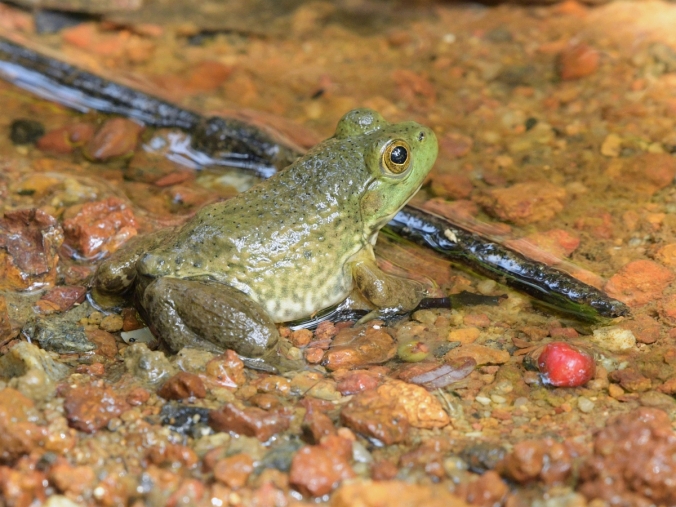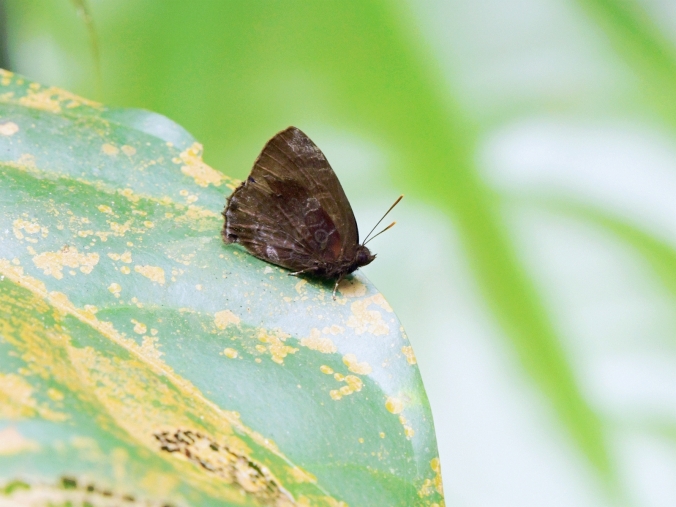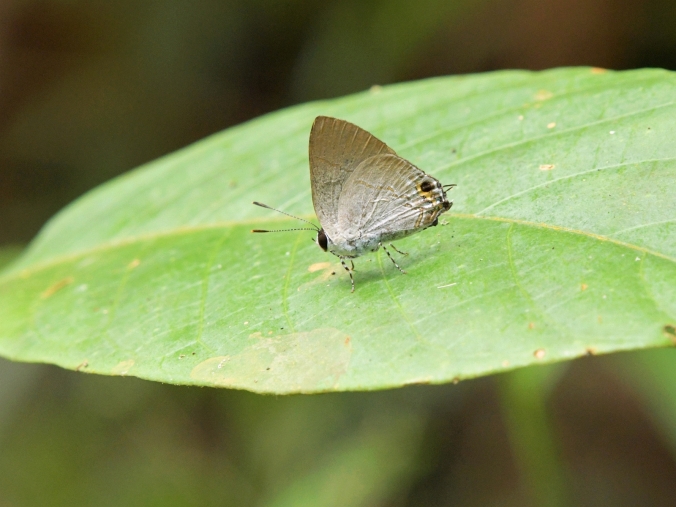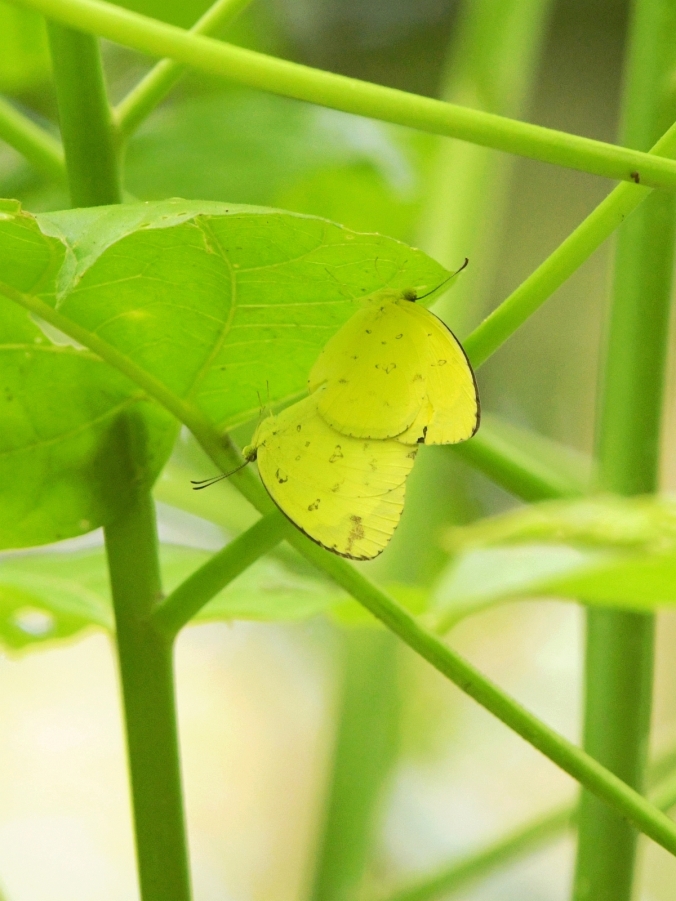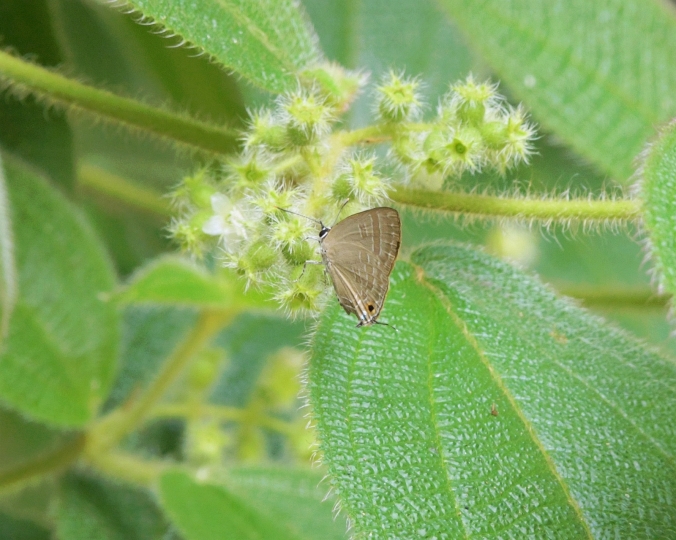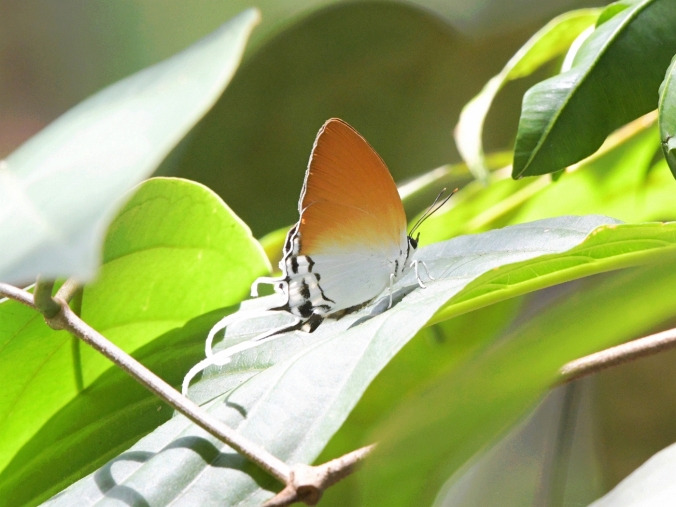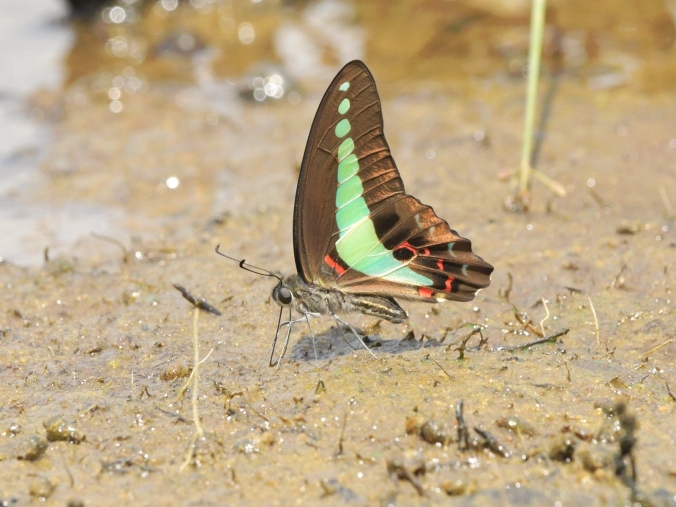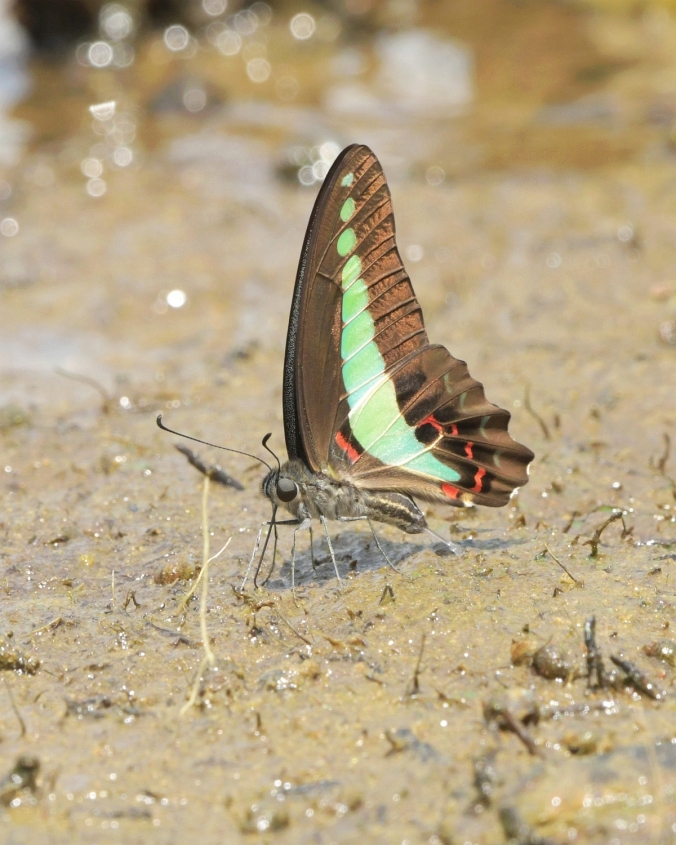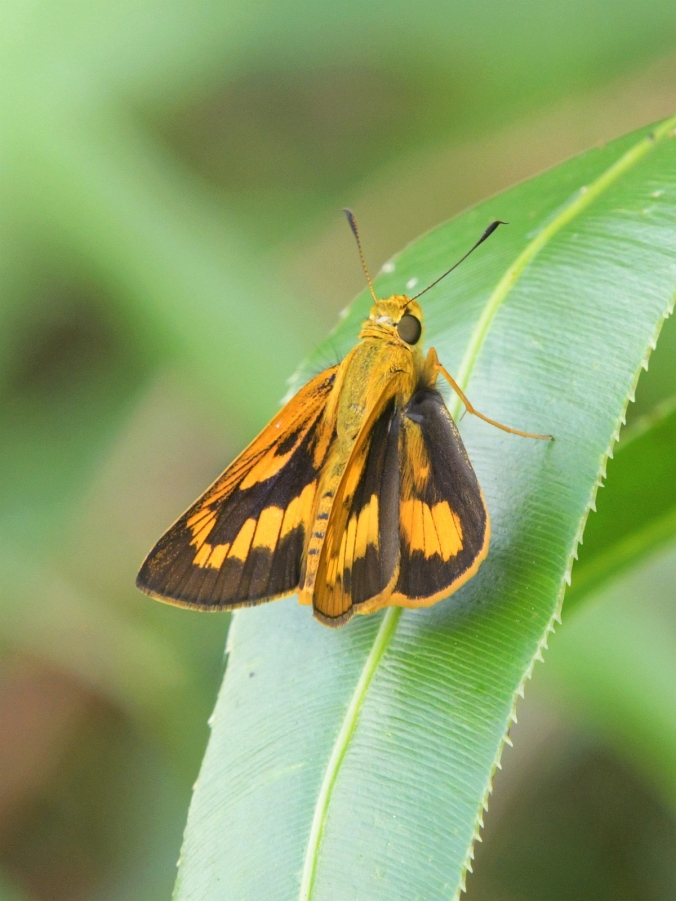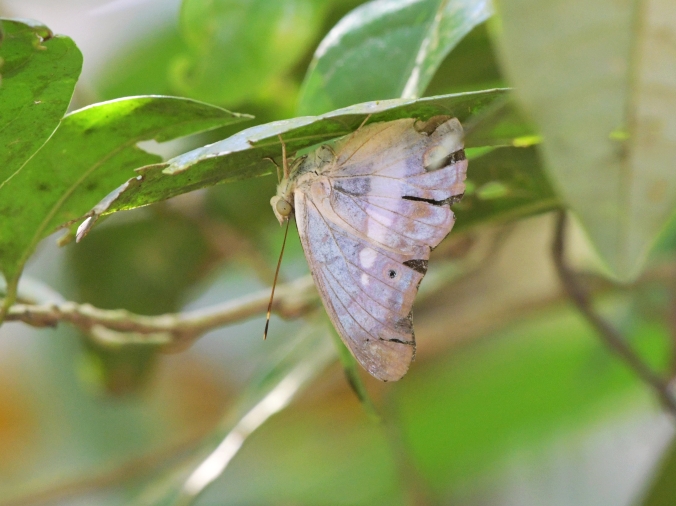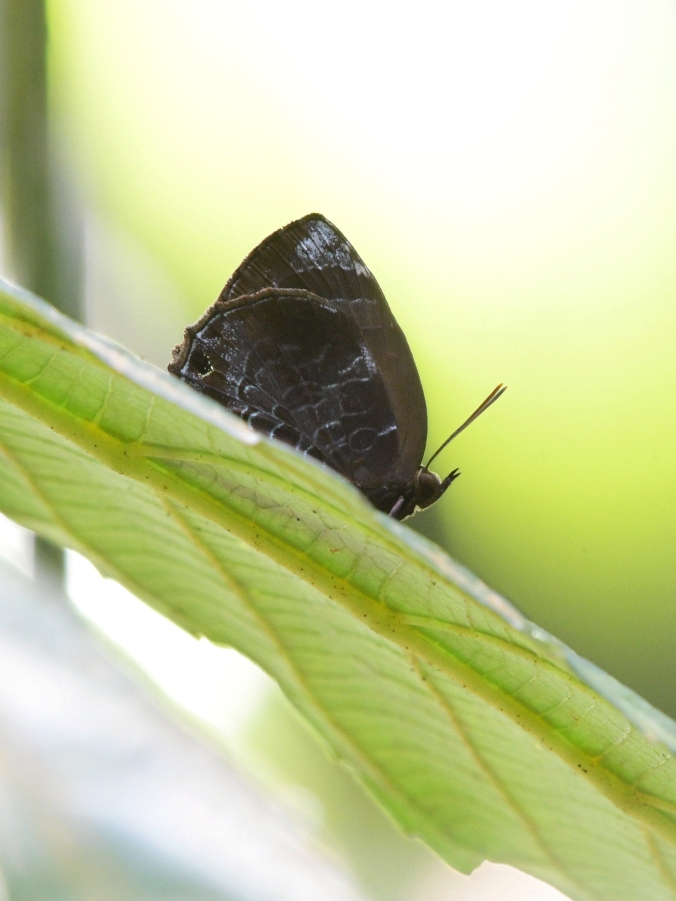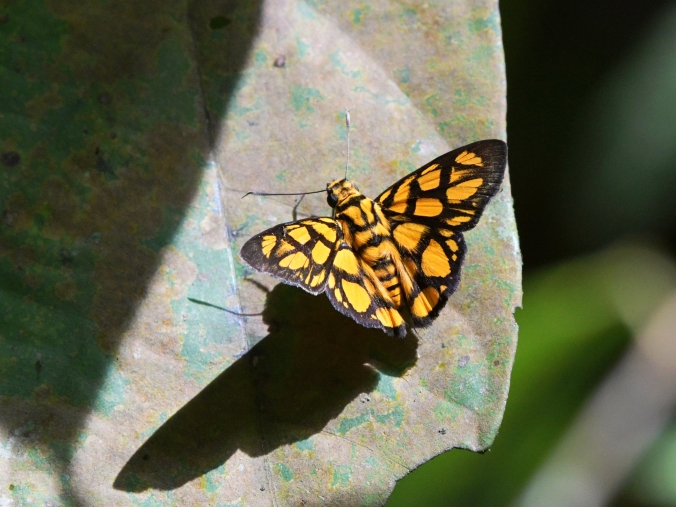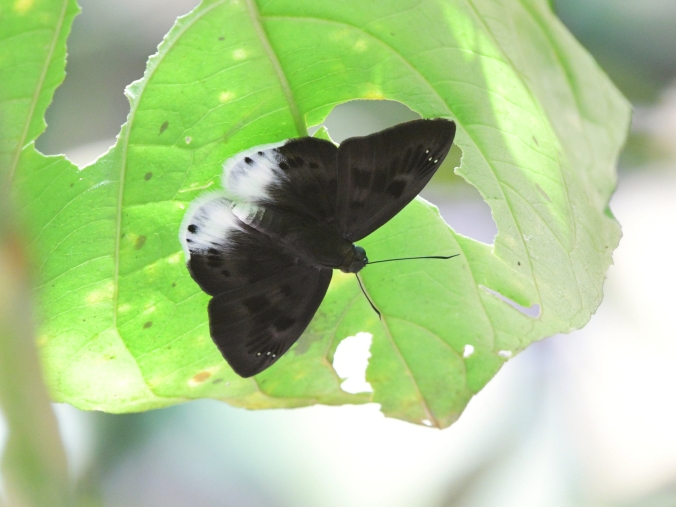Since we started butterfly watching on 14 May 2016, we have never met another butterfly watcher during our trips. They must be somewhere but there are too many sites and too few eyes, so the probability is almost close to zero. To be frank, that was how it was twelve years back when I had just started birdwatching. Now, there are so many birdwatchers and bird photographers that to get the best spot, it can get a bit competitive.
Thankfully, Singapore has a couple of NGOs that are into raising public awareness of our precious “few” biodiversity. Nestled near the center of the Greater Sunda biodiversity hotspot, a great effort is needed to be ignorant of what we actually have. Even the number of different bugs and birds landing at our doorstep is staggering…
Back to the subject on NGOs, this Saturday morning was sense in the sense that Nature Society Singapore had organised a butterfly walk at Rifle Range. Taking advantage of the numbers, we decided to join the walk at the last minute. A quick message to Amy, our guide, and we were all set to go.
Starting at the entrance of the Rifle Range trail, we enjoyed a short briefing by Amy on the resident butterflies that we may encounter along the way. As with most walks, the guide never fail to mention the specialties like the biggest butterfly in Singapore, the Common Birdwing, and the famous like our national butterfly, the nationally endangered Common Rose. Amy really did a great job to get us excited. Besides excitement, what else can we feel in the largest connected forest in Singapore?
Our first stop was at the flowering Arthrophyllum diversifolium, less than five meters from the entrance. The combined experience of Amy, Lena, Yik Shin and Simon really paid dividends immediately as we quickly identified a couple of butterflies, including the rare Yellow Flash. As usual, for me, photographing the butterflies took precedence over trying to identify them. With hindsight, that was probably the best decision for the day, only bettered by the decision to come for the walk.
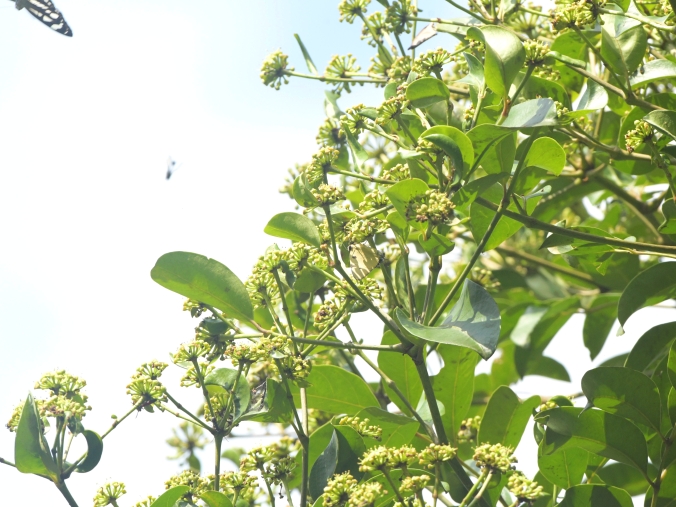
Can you spot the Yellow Flash? Apparently, it wasn’t the rarest butterfly in this photo.
Based on my photographs, we identified a total of 11 species of butterflies and incredibly, 5 species of sergeants. Maybe there was an ongoing mobilization requiring the Sergeants to report to their Commanders right outside of the military camp… Butterfly joke aside, it was a really exciting moment to see so many butterflies!
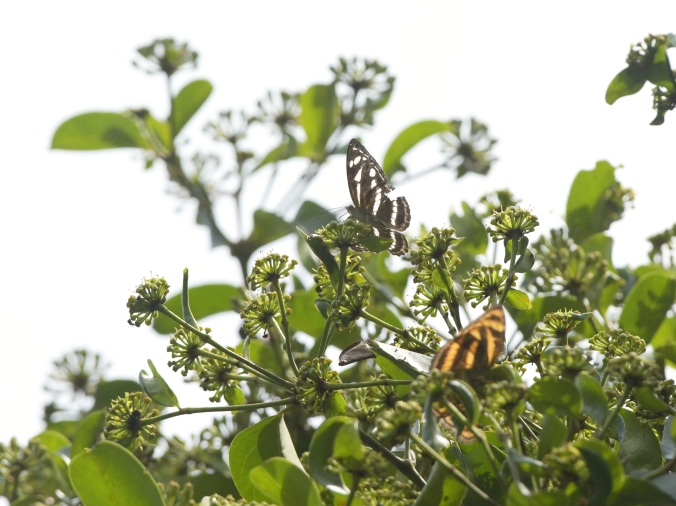
Feasting Dot-Dash and Color Sergeants
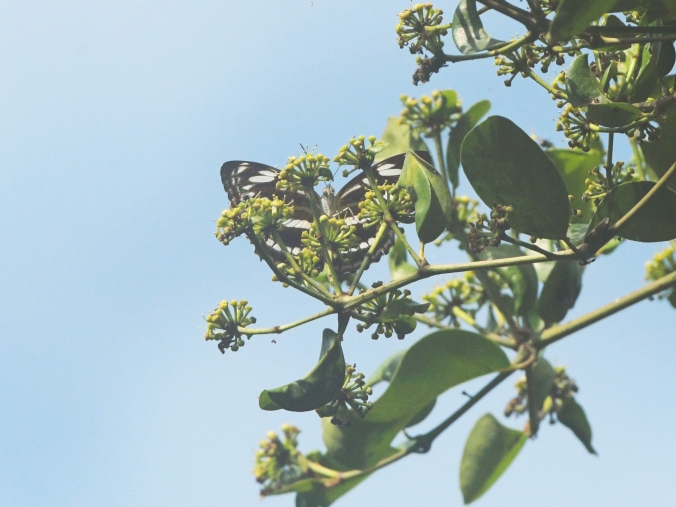
Studded Sergeant taken with Instagram effect. Yah right, the effect was unintended and was caused by the clearing of my fogged-up camera lens…
Reluctantly, we left the butterfly bonanza to continue our walk. The next attraction was a stinkhorn fungi in full bloom that had attracted a male Cruiser. It was something that we don’t usually get to see – or smell – during a typical nature walk.
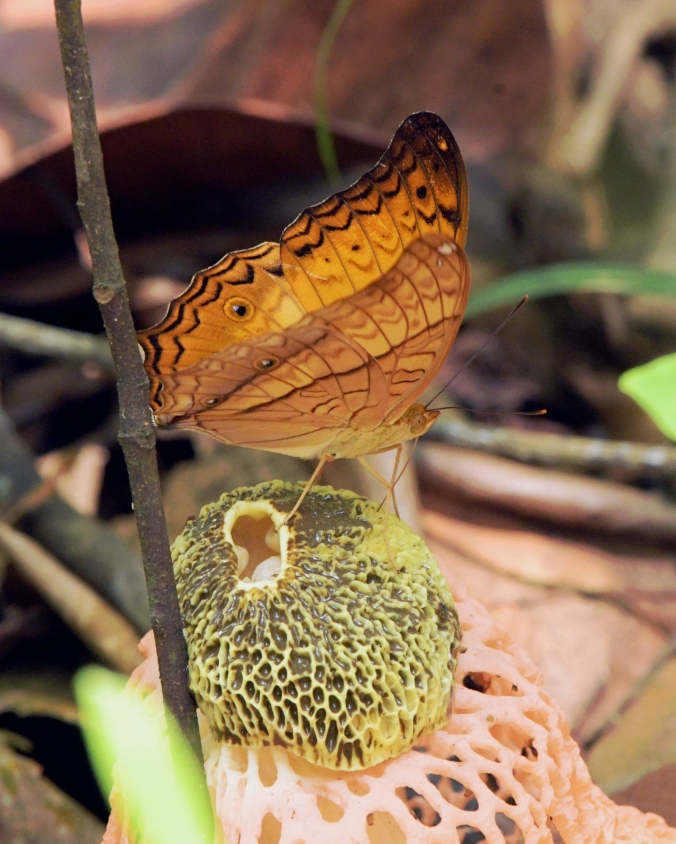
Some things don’t smell bad when you are only looking at it…
Approaching noon, we stopped at a Leea Indica plant to admire the large Sultan dragonfly. Unexpectedly, a Great Imperial made an appearance. My mother calls it another “sotong” because of its squid-like flight. However, to everybody else, this was something special. We couldn’t figure out its identity then but the sighting was certainly great. (Pun intended.)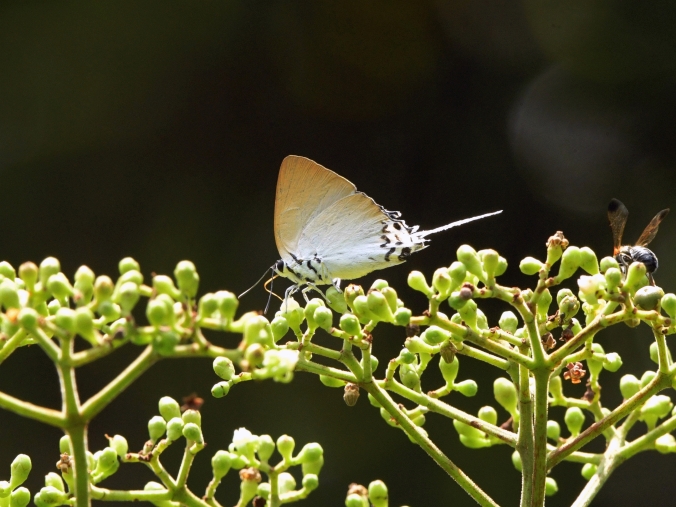
The morning had been great. We had a great sighting and chanced upon a couple of forest gems, which we don’t get to see outside of a forest. Wrapping it up, did I forget to mention that we actually saw a Sumatran Gem?
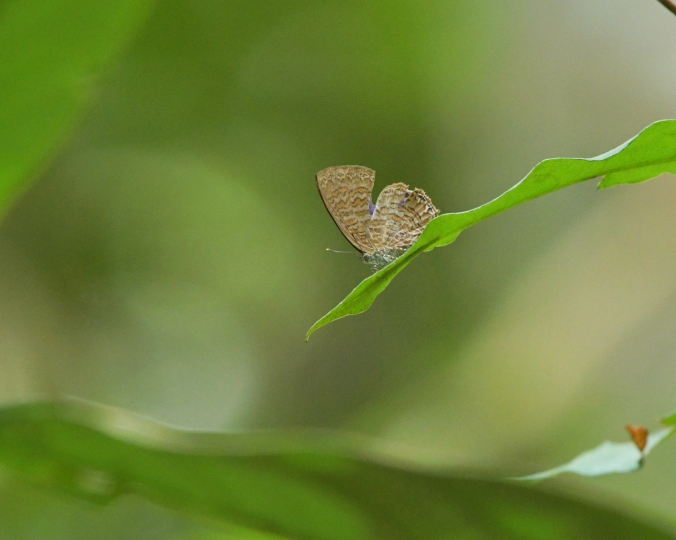
A female Sumatran Gem taking a break after fluttering across our path.
Many thanks to NSS for organising this walk and to Amy and Simon for the great guiding and company! It was our pleasure to have this opportunity to meet and learn from you! Our Central Catchment forest is truly a biodiversity treasure trove and should be conserved in its entirety for the generations to come…
List of Butterflies seen:
- Dot-Dash Sergeant (1 seen feeding on Arthrophyllum diversifolium)
- Color Sergeant (>2 seen feeding on Arthrophyllum diversifolium)
- Studded Sergeant (1 seen feeding on Arthrophyllum diversifolium)
- Lance Sergeant (1 seen feeding on Arthrophyllum diversifolium)
- Malay Staff Sergeant (1 seen feeding on Arthrophyllum diversifolium)
- Grey Sailor (>4)
- Malayan Lascar (>10, including >5 seen feeding on Arthrophyllum diversifolium)
- Knight (>2, including 1 seen feeding on Arthrophyllum diversifolium)
- Commander (>3 seen feeding on Arthrophyllum diversifolium)
- Yellow Flash (1 seen on Arthrophyllum diversifolium)
- Suffused Flash (1)
- Rustic (>4, including 1 seen feeding on Arthrophyllum diversifolium)
- Malay Baron (1 seen feeding on Arthrophyllum diversifolium)
- Malay Viscount (1)
- Archduke (>6)
- Common Mormon (>2)
- Blue Jay (1)
- Plain Nawab (1)
- Common Mime (1)
- Branded Imperial (>3)
- Great Imperial (1)
- Common Posy (>5)
- Sumatran Gem (1)
- Ultra Snow Flat (1)
- Lesser Dart (1)
- Common Dartlet (1)
- Chestnut Bob (1)
- Starry Bob (1)
- Yellow-Veined Lancer (5)
- Elbowed Pierrot (4)
- Striped Black Crow (1)
- Striped Blue Crow (1)
- Cruiser (>8, including 1 male seen feeding on stinkhorn fungi)
- Common Faun (>6)
- Malay Lacewing (2)
- Common Awl (1)
- White Banded Awl (1)
- Brown Awl (1)
- Common Grass Yellow (2)
- Chocolate Grass Yellow (1)
- Tree Yellow (>3)
- Lemon Emigrant (1)
- Malayan Bush Brown (4)
- Dingy Bush Brown (2)
- Dark Branded Bush Brown (2)
- Long Branded Bush Brown (1)
- Mycalesis Perseoides Perseoides (1)
- Common Three-Ring (3)
- Common Four-Ring (2)
- Common Five-Ring (1)
- Purple Duke (3)
- Chocolate Pansy (>5)
- Common Palmfly (2)
- Tawny Palmfly (1)
List of Birds seen:
- Red-Eyed Bulbul (1)
- Cream-Vented Bulbul (1)
- Olive-Winged Bulbul (h)
- Blue-Throated Bee-Eater (1)
- Pin-Striped Tit-Babbler (>3)
- Red-Crowned Barbet (1)
- Drongo Cuckoo (1)
- Malaysian Hawk Cuckoo (heard 2 short call “whi wick”)
- Blue-Winged Leafbird (2, including 1 female and 1 juvenile)
- Crimson Sunbird (1)
- Oriental White-Eye (>3)
- Orange-Bellied Flowerpecker (1)
- Changeable Hawk Eagle (1)
- Common Tailorbird (1 juvenile)
- Dark-Necked Tailorbird (h)
